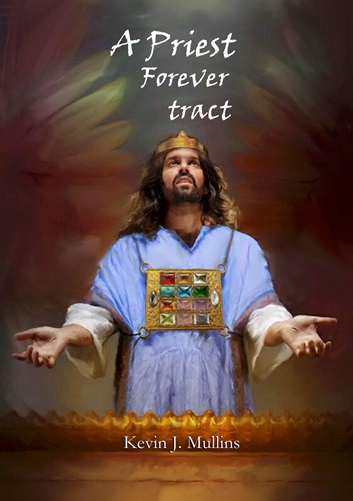Pastor in 2010 Fainted Twice Preaching God Actively Destroying the Wicked
I would like to make readers of Maranatha Media aware of an interesting thing that happened 13 years ago. It regards John Nixon, then pastor of Southern Adventist University, responding to Dr. Tim Jennings in 2010. I am not sure when exactly Jennings’ began his ministry; his first blog post on comeandreason.com is in 2007 and his first video on his youtube channel is only in 2012 – so this would be near the beginning of Jennings’ ministry.
Jennings had been preaching that God’s wrath is to withdraw His protection and let the sinner reap the consequences of sin; and that God doesn’t use active means of punishment because that would be force. In this passive punishment model, it is actually man who forces God to let him go, because to keep withholding the consequences would be unjust. God, according to man’s choice, allows him to reap what they sow of sin. The consequence – whether it be sickness, war, famine, drought, etc – is the result of sin, not God arbitrarily commanding it to happen.
The flip side is the active model of wrath, where it is God who is the one who punishes sin – He sends the lightning bolt; He causes the heart attack; and He causes the plants not to grow. The issue here in particular is what happens to the wicked at the end of time, but the active wrath principle allows for God to actively use violence at any time.
I would like to quote the whole spectrum article here in case it is taken down. Sadly the sermon mp3 and the word document are no longer available. It is particularly interesting because the pastor felt the need to preach the sermon twice, and fainted twice – a bizarre occurrence that recalls the Biblical idea of two witnesses.
*****
https://spectrummagazine.org/article/jared-wright/2010/05/26/pastor-passes-out-while-preaching-twice
Pastor Passes Out While Preaching – Twice
Spectrum Staff | May 26, 2010
The Collegedale Seventh-day Adventist Church on the campus of Southern Adventist University announced on its website that senior pastor John Nixon fainted on two separate occasions. The announcement stated that Nixon passed out on April 24 and again on May 22 while preaching a sermon entitled “The Wrath of the Lamb.”
After Spectrum contacted church administrator Wolf Jedamski asking for clarification, the website’s announcement was amended, stating only that Nixon was unable to finish his sermon on May 22. The announcement now says that, “Pastor Nixon was unable to complete his sermon ‘The Wrath of the Lamb’ Sabbath, May 22. He was attended to by medical personnel and released that day.”
The announcement also added an affirmation after the fact: “In light of recent events, we, the pastors and elders of the Collegedale Church, express our strong support for Pastor John Nixon and our gratitude for his Christ-centered, biblical preaching, theological leadership and spiritual commitment. John, we are committed to uphold you as our spiritual leader and we will continue to uphold you in our prayers.” Citing HIPAA regulations, Jedamski declined to comment on Nixon’s diagnosis, stating only that he was attended to by medical personnel on May 22, and subsequently released. Jedamski did not clarify whether or not Nixon was hospitalized on April 24th.
Nixon did not respond to requests for comment.
Sermon Addresses Doctrinal Controversy
Nixon began his “Wrath of the Lamb” sermon by stating, “There is a conflict of doctrinal teaching going on in our church, and it has become contentious. Some among us, under the guise of ‘unique truth,’ are promoting error concerning the character of God and the teaching is very subtle.”Nixon went on to say that he would rather discuss a less controversial topic, but said that “the stakes are too high. One misconception about who God really is leads us down a path fraught with danger, and I cannot stand silently by.” Nixon staked out what he called “the biblical teaching on this topic.”
The controversial subject at hand is whether God’s wrath includes “active” punishment of sin (i.e. God destroys the wicked) or “passive” punishment of sin (i.e. God withdraws protection, allowing the unrepentant to reap the natural consequences of sin). For Nixon, divine justice demands that God destroy the wicked for the sake of the weak and vulnerable.
Dr. Timothy Jennings, a psychiatrist and creator of ComeAndReason.com, sees things differently. His website advances the idea that if it is unremedied, sin, not God ultimately destroys human beings. Jennings teaches a popular Sabbath School class that was recently moved from the Collegedale Church to Ackerman Auditorium on Southern’s campus across the street. Jennings also authored two books: The Healing of the Mind, and Could it Be This Simple?
Debating God’s Character
Without naming Jennings, Nixon in his sermon categorically and emphatically rejected any teaching that does not make room for God’s active punishment of evil. Scripture reveals God as the God of mercy and justice, the God of life and death, the God of giving and of taking away, Nixon said. God is compassionate and gracious, forgiving rebellion and sin. God’s love is unearned and extravagant. However, Nixon said, God is also the God of justice and judgment. God’s character is only complete in light of rejection and destruction of those who refuse divine mercy, he insisted. God does not leave the guilty unpunished.
For Nixon, interpretations that contradict this punitive view of God “explain away the portion we do not like,” or “pretend the Bible does not mean what it says.” We must “face the uncomfortable truth with humility.”
On April 24th, Nixon was preaching the sermon for the second time (Collegedale has three services) when he fainted. Undeterred, he decided to preach the sermon again nearly a month later. Again, he fainted before completing the sermon.
Noting a “volatile and fluid” situation, Jennings did not want to go on record except to say, “my position is well documented on my website and I cannot speak to the position Nixon holds other to say he has made it clear he does not support my position.”
In a blog post entitled “Two Pictures of God,” Jennings responded to the sermon and urged caution in reading too much into Nixon’s fainting [Note: The original link is no longer there. I found the blog post and linked it, but in it he does not mention the fainting] In the article dated April 28 (four days after Nixon’s first fainting spell), Jennings quoted his eleven-year-old nephew and fourteen-year-old niece who both reported feeling scared by the God Nixon preached about. Jennings offered a quotation from Ellen White that cautioned against terrifying children with the wrath of God.
He then asked how to tell which portrait of God is accurate: “Should we look for miracles and signs that accompany the message? Miraculous signs are not reliable evidence, because miracles can be counterfeited (remember a talking serpent). The best approach is to examine the facts, the concepts, the ideas put forth and compare them with scripture and other evidences God has provided.
Jennings listed several questions that one should ask to help in discerning truth from error. Discernment, and perceptions of truth and error seem to be the underlying issues in this doctrinal dust up. Perhaps Jennings and Nixon will find a way to continue advancing their understandings of God’s character without trading ideological blows. However, given what both seem to perceive as high stakes, the intensity of the rhetoric, and the fainting spells, accord may be unlikely.
*****
If you would like to see the original comments to this article, see here:
*****
When I looked at this article originally, I read a fascinating comment that I can’t seem to find now. But the point the commenter made was this: the two men, Pastor Nixon and Tim Jennings, teach according to their respective disciplines. A psychologist tells the patient that his life is where it is because of his own actions and tries to teach cause and effect to give the man agency over his life – a scientific way of seeing the universe, empowering the patient. A theologian tells his ‘patient’ (or church member with a problem) that his life is where it is because of God, and that God is the one who is supernaturally impacting and, in this case, punishing him. That is what they are trained to do. Especially traditionally, the theologian says that the man does not have agency over his life, what happens is according to the will of God.
Now this is a fascinating idea, and the theologian doesn’t come across looking good – and that might be why there is a huge boom in therapists, counselors, and life coaches, and a huge decrease in pastors and theologians. This is a dark ages view of the theolgian, who guesses at the [seemingly mysterious and capricious] will of God. It has its origins in paganism. Yet many theologians feel that God has given them the duty of defending His right to actively use force, and people who deny it are somehow deists/atheists/handicapping God. It is classic oppositional thinking deployed to control men's minds and not let them see the truth.
So what should a true theologian of the gospel do, not one influenced by Babylon?
We, as Christians made priests to reconcile men to God, should explain what God’s will is shown in the light of Jesus's life and His cross, and that God's law was given for our good and the consequences for obedience and disobedience made clear- righteousness its fruit, and sin its fruit. The advantage we have as theologians of “the last message of mercy” is we have a deeper understanding of design law, the enmity and sinful nature of man, the source of wisdom, and that God has given power through the Spirit of His Son to change us and make us anew, rather than us having to figure everything out ourself.
But the old-fashioned theologian that says some things are from Satan, others are from God (for example, the plagues: now they are from Satan, but at the end they will be more terrible and they will be from God), others are our own actions, etc causes unrest in the mind of the men he is advising. This lack of clarity causes man to lose trust in the advice of the theologian; his picture of reality seems antiquated and arbitrary, based on his own ideas rather than systematic thought.
Let us portray a unified picture of God, not a two-faced God. I quote here a little bit from the book I am editing by Patrick Irving, which will hopefully be out soon:
“…God is light, and in him is no darkness at all.” (1 John 1:5)
“And the light shineth in darkness; and the darkness comprehended it not.” (John 1:5)
“He was in the world, and the world was made by him, and the world knew him not.” (John 1:10)
Sin had brought misery and death, and with these things a misunderstanding of God’s character. Man substituted the love of light—the knowledge of God—for the love of darkness.
“And this is the condemnation, that light is come into the world, and men loved darkness rather than light, because their deeds were evil. For every one that doeth evil hateth the light, neither cometh to the light, lest his deeds should be reproved.” (John 3:19-20)
The evil that resulted was misattributed to God’s own doing. Man was blinded by his own enmity. God became the scapegoat for destruction instead of its true author—sin. The Almighty, in His wrath, was said to be responsible for humanity’s fallen state—He was blamed for the circumstances we now find ourselves in. We began to fear our Creator, thinking it was Him who needed to be appeased in order to be reconciled to us. Our gentle and loving Father became, in the minds of men, the source of disease, decay, and discomfort.
“‘Blame God’ is the devil’s subterfuge: and how many thousands of Christians today attribute to God what Satan is doing. If calamity comes to them, they say ‘it is God’s hand,’ and they either passively yield or else they rebel, with the result that the heart is heavy and the spirit dulled and oppressed.” (Charles H. Usher, Satan: A Defeated Foe, pg. 53, published in 1964)
“Satan brings about the actual happenings of accidents, sickness, disease, and calamity, then causes men to think that God brings these things to pass. Thus He [God] is blamed erroneously for the work of the devil by millions, even by so-called Christians who should know better.” (Finis Dake, Dake’s Annotated Reference Bible, pg. 522)
“The false theology that God is, in some mysterious way, connected with the sending of sickness and pain and death, blotted out His true character as a God of love many centuries ago, and this theology has become so imbedded in the system of the Church and her teachings that it requires a strongminded minister or priest to extricate himself from it and practice and teach the simple acts and words of Christ the great healer, who still heals.” (Henry B. Wilson, “Mr. Hickson's Healing Mission” in The Nazarene: Presenting the Message of Healing in Christ, vol. 4-6, pg. 10, published in 1919)
This distorted theology has obscured the true God from the hearts of humanity. Our fallen state has so infected our minds as to make us believe that God is against us. Men have been led to believe that it is God who punishes the sinner and, therefore, in order to be free from the consequences of sin, men must break free from the hand of God. We regard God in the same way Lucifer did. We have clothed our heavenly Father in the very robes of our adversary.
“Satan leads men to conceive of God in a false character, as having attributes which he does not possess.” (Ellen G. White, Spirit of Prophecy, vol. 4, pg. 399)
“From the beginning it has been Satan’s studied plan to cause men to forget God, that he might secure them to himself. Hence he has sought to misrepresent the character of God, to lead men to cherish a false conception of Him. The Creator has been presented to their minds as clothed with the attributes of the prince of evil himself,—as arbitrary, severe, and unforgiving,—that He might be feared, shunned, and even hated by men. Satan hoped to so confuse the minds of those whom he had deceived that they would put God out of their knowledge. Then he would obliterate the divine image in man and impress his own likeness upon the soul; he would imbue men with his own spirit and make them captives according to his will.” (Ellen G. White, Testimonies for the Church, vol. 5, pg. 738)
More info on this subject:
- Adrian Ebens presentation: The Law our Hedge and Shield
- Danutasn Brown presentation: The Science of understanding God
- Kevin Mullins' article: (Revelation 6:14-17) What is God’s Wrath?
- Tim Jennings presentation: Designer or Dictator? An Exploration of God's Law and Justice
- Gary Hulquist booklet: The Loving Wrath of God





